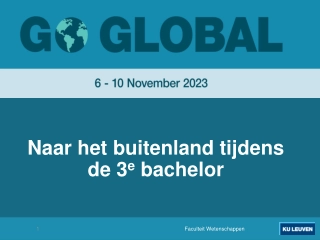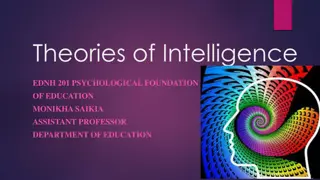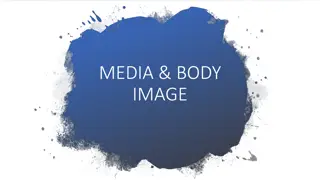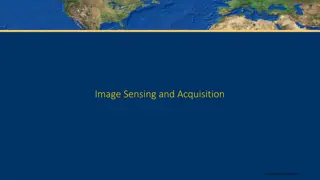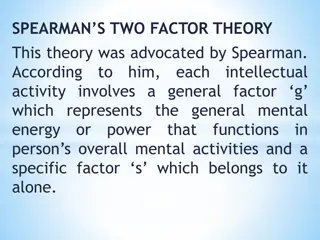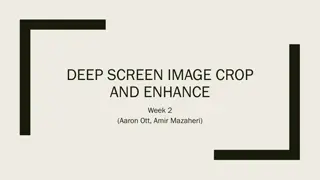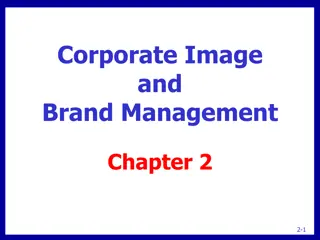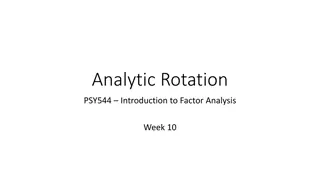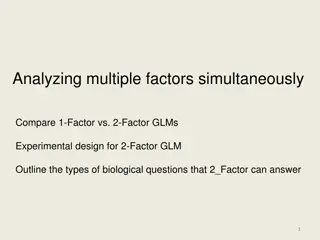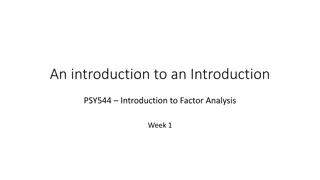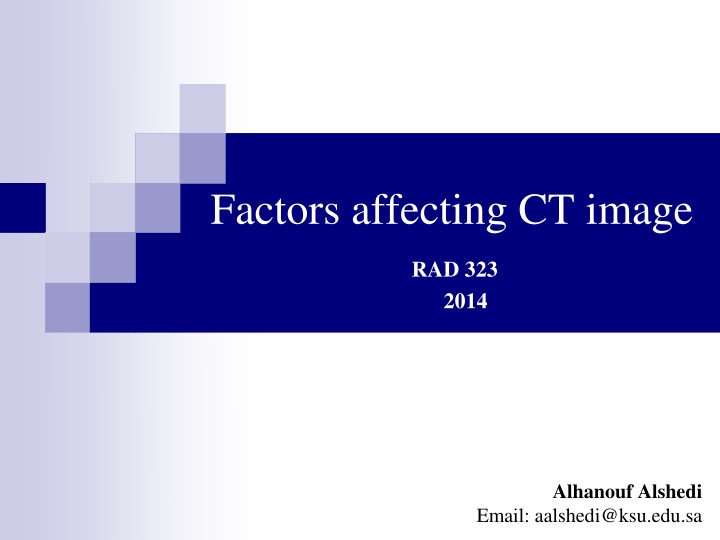
Factors Affecting CT Image Quality and Techniques
Explore the various factors influencing CT image quality such as machine parameters, operator techniques, focal spot size, mA tube current, kVp settings, and filtration effects. Learn how to optimize CT images by adjusting these parameters for improved diagnostic accuracy.
Download Presentation

Please find below an Image/Link to download the presentation.
The content on the website is provided AS IS for your information and personal use only. It may not be sold, licensed, or shared on other websites without obtaining consent from the author. If you encounter any issues during the download, it is possible that the publisher has removed the file from their server.
You are allowed to download the files provided on this website for personal or commercial use, subject to the condition that they are used lawfully. All files are the property of their respective owners.
The content on the website is provided AS IS for your information and personal use only. It may not be sold, licensed, or shared on other websites without obtaining consent from the author.
E N D
Presentation Transcript
Factors affecting CT image RAD 323 2014 Alhanouf Alshedi Email: aalshedi@ksu.edu.sa
CT Image Quality CT image is influenced by several parameters, of which some depend on the performance of the CT scanner and some depend on the operator`s selection of parameters. Parameters that depend on CT machine: pixel size, temporal resolution and reconstruction algorithms. Parameter that depend on operator : kV, mAs and slice thickness.
Focal spot size CT utilizes different focal spots sizes. Focal spot size Is determined by: Filament size Filament length (1 (2 SMALLER FOCAL SPOT - Low mA SMALLER FOCAL SPOT sharper image
mA tube current mA is the number of electrons emitted or flowing from cathode to anode. S is the time of exposure (seconds). - mAs is the tube current(milli-amper) for a certain length of time (second).
mA INTENSITY CURRENT ENERGY NO CHANGE 2 * mA = 2 * number of photons 4 * mA = 4 * number of photons
Cont. To improve image we need to reduce motion & noise Avoiding motion mA time Pediatric technique modification Reducing noise - mAs MOTION
kVp Potential difference between cathode and anode (kiloVolts). ENERGY kVp INTENSITY 15% INCREASE OF KVP = 2 * mAs
kVp in CT Usually in the range of 80-140 kV Too low KV noise (not enough penetration of the patient ) Too high kV over exposure
Filtration Filter Patient Detector
Cont. Filtration removes long-wavelength x-rays that do not play a role in image formation but cause pt dose. Energy of beam and beam becomes harder . Filtration uniforms the energy of beam. (1 (2 CT filters are usually 3mm, added flat or shaped copper filters can range from 0.1 -0.4 mm. Special filters such as bowtie made of Teflon can reduce beam hardening artifacts.
Filtration effect INTENSITY FILTRATION ENERGY
Collimation Filter SHAPES BEAM + REDUCES AMOUNT OF SCATTER RADIATION Patient DEFINES SLICE THICKNESS + REDUCES SCATTER RECHING THE PATIENT Detector
Collimator Collimation removes scatter radiation improves resolution. Some scanners include placed in front of detectors to remove scatter radiation and improve image quality. an anti-scatter grid
Steps of CT image formation CT image formation Image Data Image display and storage reconstruction and processing acquisition
Digital & Analog images Analog images: are continuous images e.g black & white chest x-ray, because they represent continuous distribution of light intensity as a function of position. Digital images: are numerical representation of objects. The formation of digital images requires a digital computer. Any information that enters the computer for processing must converted into digital form or numbers.
A/ D converter Analog image D/A Image converter reconstruction and processing Analog image
Image domains Image domains: images can be represented into 2 domains: spatial domain Frequency domain Spatial domain Frequency domain (a (b Digital imaging can transform an spatial domain into frequency domain using a Fourier transform (FT). The FT (inverse FT) is used to transform the image from frequency domain back into image from the spatial domain.
Radiography and CT acquire images in the spatial domain. High spatial frequencies (image detail) MRI acquires images in the frequency domain. The major reason for using frequency domains is to enhance or suppress certain features of the image. Some image processing operators are more efficient or only practical when applied in the frequency domain. Low spatial frequencies (image contrast)
Digital image A digital image is a representation of a two- dimensional image as a finite set of digital values, called picture elements or pixels
An image is represented by a number of picture elements (pixels). These pixels are arranged into rows and columns. Y representing the columns and X representing the rows. 0 1 2 3 4 5 6 7 8 9 10 11 0 1 2 3 4 5 6 7 8 8, 3
Matrix and FOV The matrix is a digital image made up of two dimensional arrays. It consists of columns (M) and rows (N). The matrix size is related to the FOV. It can be determined by : Matrix size= M x N x K bits Where k bit is the bit depth (each pixel will have 2 gray levels). If M=N the image is square. If M N then the image is rectangle.
Each pixel contains a number that represents the brightness level (gray level). This number represents tissue characteristics, in x-ray and CT, whereas, in MRI it represents proton density and relaxation times. o Pixel size can be calculated using: Pixel size = FOV/ matrix size The larger the matrix size the smaller the pixel size the better the resolution if FOV is constant. Voxel is the representation of volume (thickness)
Why do we need to digitise images Images need to be digitised to perform several fundamental operations: Image enhancement Image restoration Image analysis Image compression Image synthesis (1 (2 (3 (4 (5
1- Image enhancement: To produce an image the is more pleasing to the eye. Shapes and edges can be enhanced to improve quality of image. This operation includes: contrast edge enhancement, frequency filtering, noise reduction. enhancement, spatial and Noise reduction
2- Image restoration: improve distorted, degraded blurred (from images by compensating or undoing the defect using special filters. To quality of or motion)
3- Image analysis: Allows measurements and statistics to be performed in addition to image segmentation, feature extraction and classification of objects. 4- Image compression: - For large amounts of data, compression is needed to reduce size and facilitate processing, transmission and storage. - Compression can be 2 types: 1) A- Lossy compression some loss of detail when image is decompressed, provides higher levels of data reduction. 2) B- Lossless compression no loss of information when image is decompressed, used for medical imaging.
Image compression 5- Image synthesis: Create images from other images or non-image data. Ex. Reconstruction that are the base of CT and MRI and 3D techniques.
Any Question? Thank You


